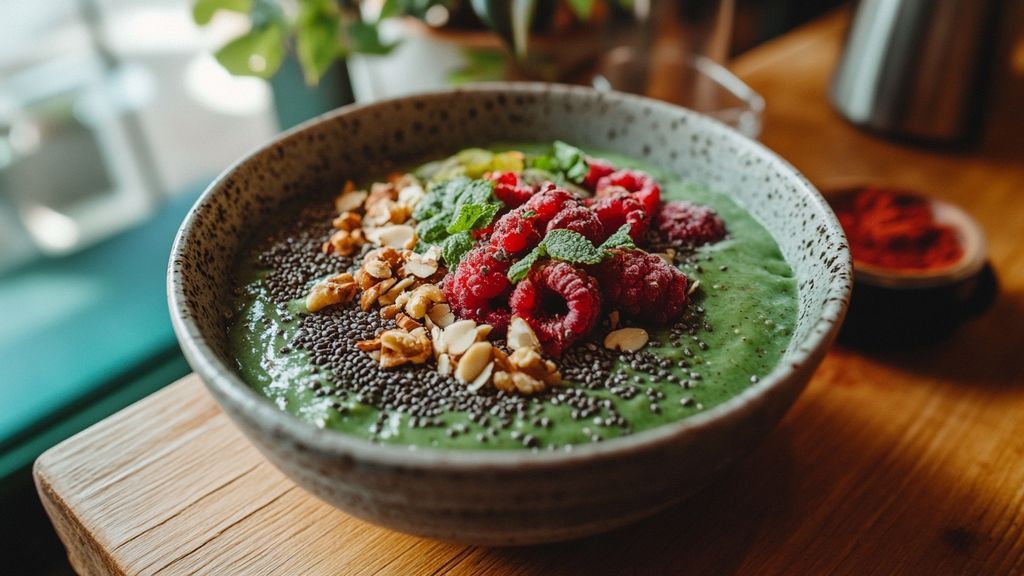CrossFit has emerged as a powerful methodology for enhancing fitness and ultimately promoting longevity. This high-intensity training program integrates various forms of exercise that effectively push the limits of physical capabilities. More than just a workout routine, CrossFit offers a community-driven environment that encourages individuals of all ages to push their boundaries and achieve their peak potential. The rising popularity of CrossFit, especially among older adults, highlights its adaptability and effectiveness in maintaining and improving health. It’s incredible to see individuals, like Jim Dreeben, who started CrossFit in his 80s, showing us that it is truly never too late to embark on a journey towards greater fitness. By engaging in this multifaceted training, individuals can enjoy enhanced health, improved quality of life, and the possibility of increased longevity.
Understanding CrossFit and Its Impact on Longevity
At its core, CrossFit focuses on promoting functional movements that mimic everyday actions, thereby enhancing one’s strength, endurance, flexibility, and balance. A well-rounded CrossFit regimen consists of weight training, cardiovascular conditioning, and mobility work. Functional fitness is crucial as it allows individuals to maintain independence as they age, which is essential for longevity.
Many studies have chimed in on the benefits of strength training, especially for older adults, confirming its vital role in combating age-related muscle loss and improving bone density. With over 15,000 CrossFit gyms worldwide, the sport provides a community setting where individuals can experience the benefits of peer motivation, which is especially important for maintaining a consistent fitness routine.
Age should not be a limitation. The flexibility of CrossFit allows athletes like Jim Dreeben to achieve remarkable results alongside younger participants. This environment not only promotes physical health but also fosters mental resilience by facing challenges head-on.
Physical Benefits of CrossFit Training
Engaging in CrossFit comes with a plethora of physical benefits that directly correlate to longevity. Primary among these is the improvement in cardiovascular endurance, which is invaluable as heart disease continues to top the list of health concerns for aging populations. A well-structured CrossFit program emphasizes high-repetition, high-intensity workouts that can significantly boost cardiovascular performance and overall heart health.
Resistance training forms an integral part of the regimen, with a focus on lifting weights, performing bodyweight exercises, and engaging in functional movements. This combination enhances muscle strength and mass which is crucial as we age; retaining muscle mass directly impacts our metabolic rate and overall vitality. CrossFit offers a variety of modifications designed to accommodate different fitness levels, allowing anyone to adapt and thrive.
Furthermore, CrossFit does not just promote strength; it also encourages flexibility and mobility. As we age, maintaining joint health and flexibility becomes increasingly important. CrossFit incorporates stretching and mobility exercises that help alleviate common issues associated with aging muscles and joints.
Mental Well-Being Through CrossFit
CrossFit also profoundly impacts mental health, which is an often-overlooked component of longevity. Engaging in regular, intense physical activity boosts the production of endorphins, often referred to as ‘feel-good’ hormones. These natural mood lifters can help combat anxiety, depression, and stress, all common concerns for older adults.
Additionally, the communal aspect of CrossFit fosters social connections. Many individuals report feeling lonely as they age; classes filled with participants who share similar fitness goals create friendships. Engaging with like-minded people can improve mental resilience, which is essential for maintaining a healthy lifestyle.
Consider the story of famous CrossFit athletes who thrive into their later years. These individuals serve as an inspiration due to their visible passion for fitness and health, reshaping societal views on aging. They embody the ethos that physical activity should persist regardless of age, promoting a healthy lifestyle that contributes to longevity.
Nutrition and CrossFit: An Important Pairing

No discussion about wellness and longevity can be complete without addressing nutrition. CrossFit encourages its participants to adopt healthier eating habits, which play a vital role in achieving fitness goals and maximizing physical results. Proper nutrition complements CrossFit training by ensuring that the body has the necessary fuel to perform at its best.
Many CrossFit gyms offer nutritional guidance, suggesting diets rich in whole, unprocessed foods. Not only does this boost energy levels, but it also helps mitigate chronic diseases often associated with aging, such as diabetes and heart disease.
Eating properly becomes more important as we age. For older individuals, balanced nutrition can minimize the risk of cognitive decline and support overall well-being. Key nutrients such as omega-3 fatty acids, found in fish and nuts, promote brain health, and protein is essential for maintaining muscle mass.
Adapting Nutrition for Older Athletes
Older adults looking to embrace CrossFit should understand how their nutrition needs may differ from younger practitioners. With metabolism slowing down, it’s essential to consume sufficient nutrients that support energy levels while avoiding excess calories. Staying hydrated is equally important. Water encourages optimal bodily functions, especially during intense workouts.
Supplementation may also play a role. Depending on dietary intake, older adults may benefit from vitamins and minerals, particularly Vitamin D for bone health and calcium to prevent osteoporosis. Consulting with a healthcare professional about a personalized nutrition plan can provide valuable insights tailored to individual needs.
Moreover, nutrition impacts recovery time. CrossFit can be intense, and older athletes may find that their recovery differs from that of younger participants. Proper refueling post-workout with a combination of protein and carbohydrates is crucial for recovery and muscle regeneration.
Combatting Age-Related Decline with CrossFit
Engaging in CrossFit helps combat the common age-related decline in physical abilities. Many older adults experience a natural decrease in endurance, balance, and strength. CrossFit’s varied workout regimen directly counteracts these challenges by emphasizing diverse movements that promote overall fitness.
Dreeben’s example embodies this concept. Despite starting CrossFit at an age where many consider retirement, he showcases that it’s feasible to improve fitness levels significantly. By participating in high-intensity workouts, he has enhanced his muscular capabilities, boosted his cardiovascular health, and improved his agility.
Another significant factor in combating age-related decline is consistency. Regular exercise significantly contributes to long-term health, and CrossFit encourages such habits among its members. Finding workouts that challenge yet cater to personal limits creates sustainability, essential for ongoing progress in fitness.
The Role of Professional Guidance
CrossFit’s architecture allows for professional guidance tailored for older adults. Experienced trainers often lead classes, establishing appropriate modifications and ensuring safety. For those new to the practice, personal training can be invaluable in promoting correct form and preventing injury.
With exercises structured to do just that, older athletes gain the confidence they need to thrive in an otherwise intimidating environment. The encouragement from trainers coupled with the camaraderie of fellow gym-goers creates a supportive atmosphere motivating everyone to achieve their personal bests.
Hence, seeking out certified CrossFit trainers who have experience working with older populations can significantly impact an athlete’s journey. The importance of mentorship and guidance cannot be overstated as it ensures that all participants remain engaged and continue to progress.
Community Support — The CrossFit Culture

The culture inherent within the CrossFit community resonates deeply, making it a vital aspect of longevity and well-being. In CrossFit, the shared experience of overcoming challenges nurtures strong social bonds, contributing to overall mental health.
Jim Dreeben exemplifies this sentiment. He has taken it upon himself to create walking groups that foster connection with like-minded individuals who share similar fitness goals. Engaging in friendly competition stimulates growth, not just physically, but socially as well, creating a sense of belonging.
Support systems derived from community involvement foster accountability, making it easier for participants to adhere to their fitness routines. Age is merely a number when camaraderie thrives. When older adults train with individuals half their age, it defies societal expectations, serving as an inspiration for younger generations.
Celebrate Every Victory
In the spirit of CrossFit, celebrating achievements—whether small or significant—fuels motivation. Dreeben’s story is a prime example of how setting reachable goals can lead to greater improvements over time. Recognizing personal bests encourages participants to continue striving for more while empowering those around them to push their limits.
Fitness is not solely about competition; it entails personal growth. Each drop of sweat and every rep conquers doubts and fears alongside tangible milestones. By focusing on individual progress, gym-goers maintain a positive mindset that champions longevity.
Ultimately, the remarkable journey of older athletes illustrates the reality that it’s truly never too late to embark on a fitness journey. With CrossFit, older individuals not only improve their physical health but also enhance their overall quality of life.
